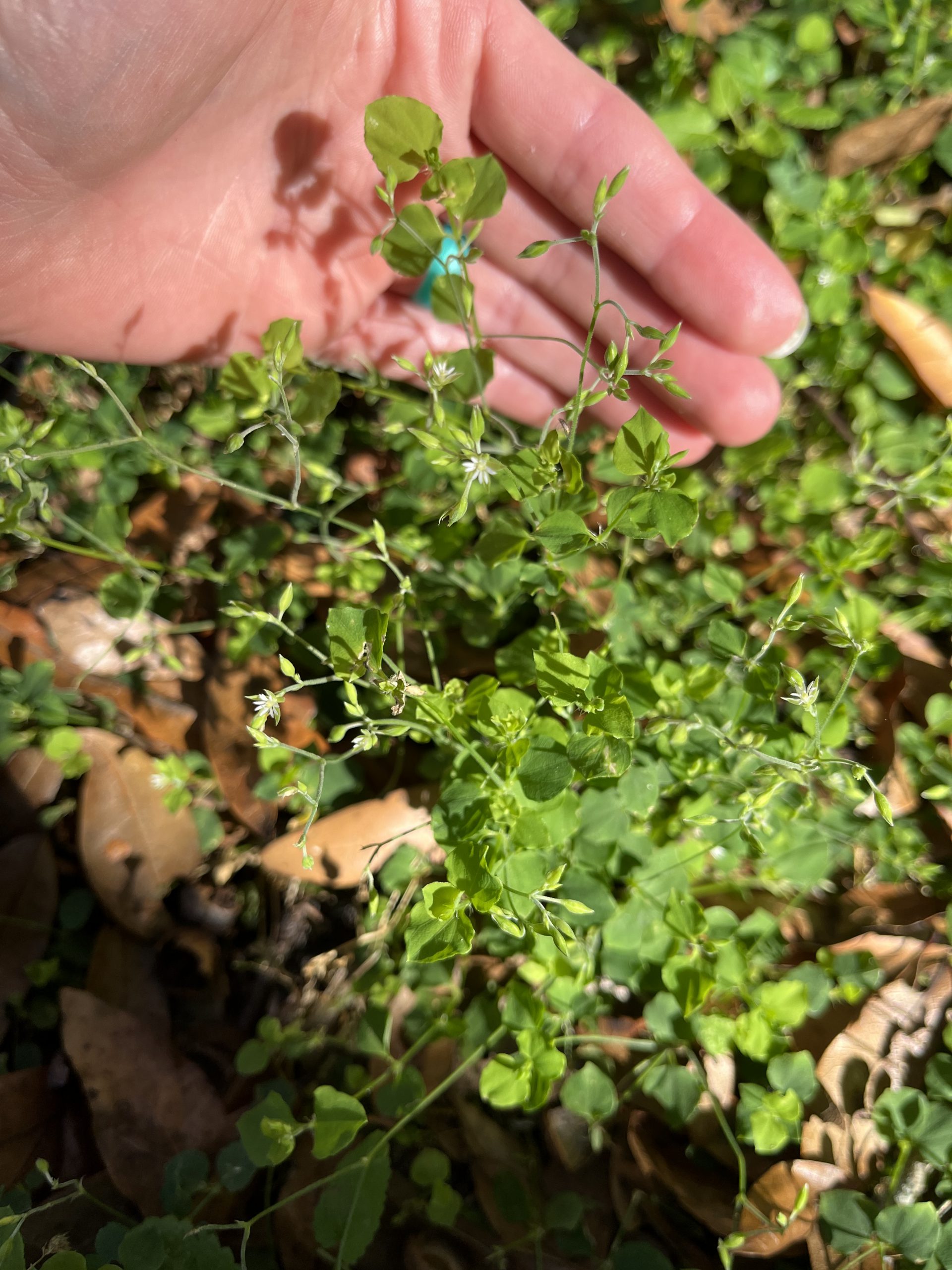
Whether it’s summer or winter, fall or spring, there will be weeds growing in Florida. One that I’m receiving a lot of calls on now is particularly annoying with it’s sticky seeds called, chickweed. There are a couple of different chickweeds (mouse-ear, common, West Indian) but they are all primarily winter annuals and prefer moist soils. The dainty white flower is beneficial to pollinators, but if this weed is left alone it may quickly encompass your lawn in seeds that stick annoyingly well to clothing, mowing blades, and pet fur. Also, pieces of stem from this plant can sprout roots in moist soil conditions and begin new populations.
The best defense against weeds is to have a healthy lush lawn by utilizing best management practices. Mow your lawn according to the recommended height. Depending on the cultivar, St. Augustine typically likes to be mowed high around 4 inches, bahiagrass between 3 – 4 inches, and zoysia needs it short between 2 – 2.5 inches. The other critical step to reduce weed pressure is to avoid overwatering, particularly in the winter months. In Marion County our turfgrasses all head into dormancy when the days shorten and the weather cools. To maintain a bit of green color, it is recommended that you water your zoysia or St. Augustine lawns once every 10 – 14 days in the winter. An established bahiagrass lawn shouldn’t require any irrigation except during periods of severe drought. It is also best to irrigate in the early morning hours between about 3 a.m. – 8 a.m. to avoid moisture sitting on the leaf blades overnight.
Despite all best efforts, there are no 100% effective weed preventatives. And some weeds are overall quite beneficial both to pollinators as well as to the health of your lawn by reducing pest and disease pressure and even adding nitrogen to your soil in some instances. But if you can’t find peace with the weeds, first try mechanically removing weeds before they flower and go to seed. It’s easiest to eradicate weeds while they’re young. If hand-pulling isn’t feasible, talk to your local UF/IFAS Extension Service about herbicide treatments best for your particular lawn. The Weed Management Guide for Florida Lawns is also a helpful resource.

For chickweed, the best method of treatment will be to use pre-emergent herbicides in early spring and fall to prevent the seeds from germinating. In Marion County, the general dates to aim for are around February 15th to help control spring and summer weeds, and then again around October 31st for the fall and winter weeds. Always follow label instructions and note that some products will need to be reapplied 6-9 weeks later and watered in to be effective. Pre-emergent herbicides are oftentimes sold to homeowners as ‘crabgrass preventers’ or Weed and Feed products. The UF/IFAS does not typically recommend the use of Weed and Feed products because they usually contain nitrogen and phosphorous fertilizer that should not be applied at the same time as the pre-emergent herbicides. However, there are some products on the market with a 0-0-7 formulation that only contain potassium which is not an issue. Otherwise, consider hiring a licensed landscaper to assist you with herbicide applications. Some sources for trained and certified landscapers include the FFL Professional Certification list or the Florida Nursery, Growers, and Landscape Association. Any landscaper that applies fertilizers and pesticides for hire should also be able to show you active licenses from the Florida Department of Agriculture and Consumer Services.
 1
1
